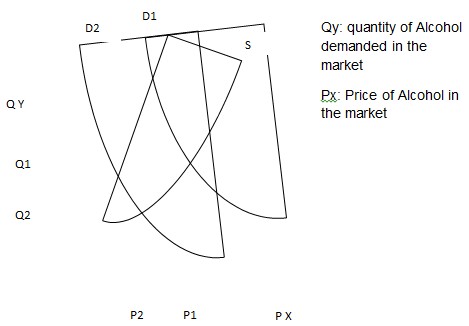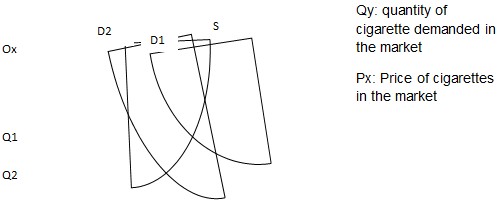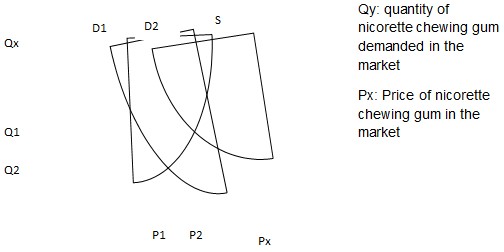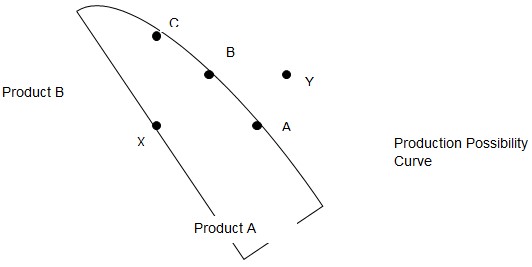The Theory of Externality
The theory of externality explains the benefit or cost incurred by a third party who was not a party to the reasoning behind the benefit or cost. According to David and Nellis (2006), “externalities reflect the ethical views and preferences of the entire population.” The cost or benefit cannot, therefore, be quantified in monetary terms. An externality may be either positive or negative depending on whether it is a cost or benefit (David and Nellis 2006).
Economists argue that all forms of trade are beneficial to the contracting parties. However, the same may affect the third party either positively or negatively. According to Nordhaus and Samuelson (2009), “externalities result in outcomes that are not optimal in a social context. Moreover, those who bear external costs do so unwillingly, whereas those who enjoy external benefits do so at no cost.” McConnell and Brue (2008) argue that negative externalities result to lower satisfaction while positive externalities result in more utility to the third parties.
Smoking in public has been associated with many negative externalities. Passive smoking is one of the negative externalities resulting from smoking in public. According to Riley (2007), passive smoking is the act of inhaling smoke from a tobacco smoke.” Research has shown that tobacco smoke contains over 4000 chemicals either in gaseous o particles form. These compounds cause irritation to the respiratory organs and may lead to lung cancer. Passive smoking may further cause irritation to the eyes, sore throat, nausea, cough, and headache. “Experts argue that exposure to passive smoking for around 30 minutes can reduce blood flow through the heart” (Riley 2007). Children are adversely affected by passive smoking; Riley (2007) argues that “Many children are admitted to hospital yearly due to the harmful impacts of passive smoking.”
The only way to tackle negative externalities associated with smoking can therefore be through the prohibition of smoking in public places. This justifies the action taken by the Scotland government.
Short-run impact of the smoking ban on alcohol sales in pubs and clubs
Cigarettes and tobacco are complementary goods. According to Nordhaus and Samuelson (2009), “Complements are goods that are characteristically used together, where consumption of one lead to the consumption of the other.”
Pubs and clubs are public places. A ban on smoking in public places will reduce the number of patrons visiting clubs and pubs in Scotland in the short run. This will therefore shift the demand curve for alcohol from the left to the as illustrated in figure 1 below.
The initial quantity demanded alcohol is represented by Q1, with a price of P1. Fewer patrons visiting pubs and clubs will decrease the quantity of alcohol demanded to Q2 shifting the demand curve inwards to D2. This will also lead to a new price P2 that is lower. The figure, however, assumes that the supply of Alcohol remains ceteris paribus.

Market for cigarettes
Banning of smoking in enclosed public places in Scotland will reduce the demand for cigarettes. This is because fewer cigarettes will be consumed. This effect can be illustrated in a demand and supply diagram as shown in figure 2 below.
The initial quantity of cigarettes demanded in the market is represented by Q1, with a price of P1. Less consumption of cigarettes will shift the demand curve to the left to a new position D2. This will also lead to offer of a lower price that is P2 for cigarettes in the market. There is however, an assumption that supply of cigarettes in the market remains ceteris paribus.

Market for nicorette chewing gum
Nicorette refers to a pharmaceutical product that has nicotine, the product substitute’s dependence on tobacco. The product was initially produced to cease smoking. This was because of presence of harmful products in tobacco smoke including carbon monoxide and tar. According to Riley (2007), “nicorette is nowadays used to relieve desire and withdrawal symptoms associated with tobacco smoking.”
Because of the ban on smoking in enclosed public places in Scotland, demand for nicorette chewing gum will go higher. This is because many people will opt to cease smoking particularly those working in public sectors. The resultant effect on demand of nicorette chewing gum in the market is illustrated in figure 3 below.

Effect of the smoking ban on the Production Possibility Curve of Scottish economy
According to David and Nellis (2006), “Production Possibility Curve depicts all output possibilities optimal for production of goods assuming that a set of inputs is given. The frontier also assumes that the inputs at stake are utilized efficiently.”
Production Possibility Curve for Scottish economy is represented in figure 4 below.

According to the Production possibility Curve shown above, points A, B and C represents the points at which manufacture of product A and B can be achieved more efficiently. X represents the point at which production of product A and B is least efficient compared to the available resources. However, point y represents production output that is unattainable with the currently available resources.
Because of the smoking ban imposed by the Scottish government, more resources will be allocated to production of other products as compared to those allocated for cigarettes production. This is because the opportunity cost of producing cigarettes will be higher than that of other products; the resultant will be a movement along the production possibility curve. This can be explained using the figure 5 below.
The Scottish economy was initially producing at point B. however, because of the smoking in public ban; more resources are allocated to production of other products. The economy will therefore produce at point A

Conclusion
The overall result of a ban on smoking in enclosed public places in Scotland will be a shift of the Scottish economic resources towards production of other products other than cigarettes. This is because fewer cigarettes will be consumed in the market. Cigarette complimentary products will also be consumed at a lower rate. However, substitutes for example nicorette chewing gum will be consumed more in the market. The ban on smoking will however, improve the lives of the citizens by reducing the harmful effects associated with passive smoking. Smoking in public has also been associated with littering, so environmental cleanliness will also be observed.
References
David, P. and Nellis, J. (2006) Principles of Business Economics, London, Financial Times Management.
McConnell, C. and Brue, S. (2008) Economics, Maidenhead, McGraw-Hill/Irwin.
Nordhaus, W. and Samuelson, P. (2009) Economics, Maidenhead, McGraw-Hill/Irwin.
Riley, G. (2007) How to Stop Smoking and Stay Stopped for Good, London, Ebury Press.